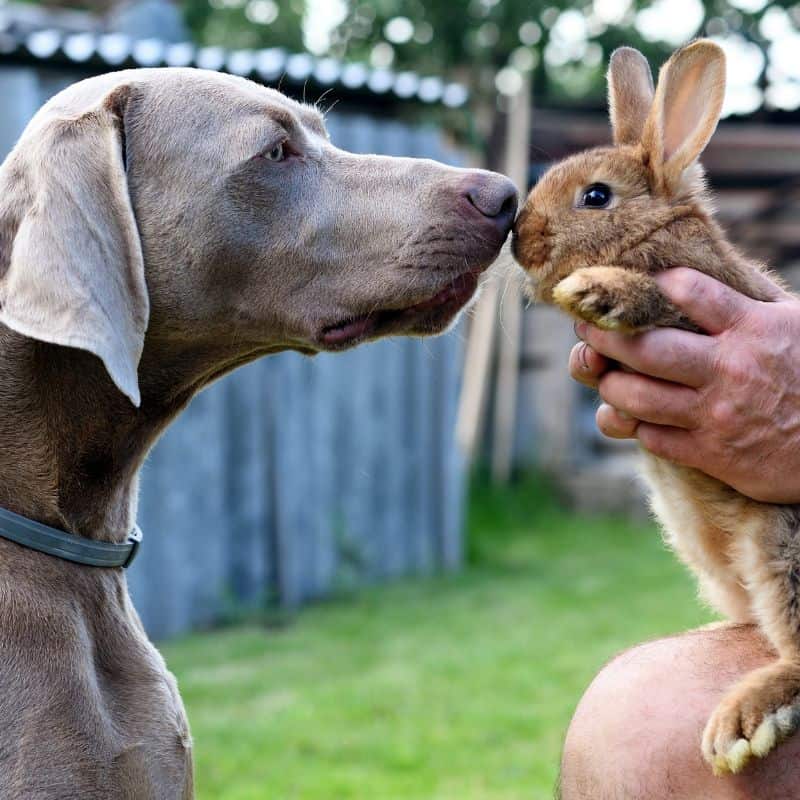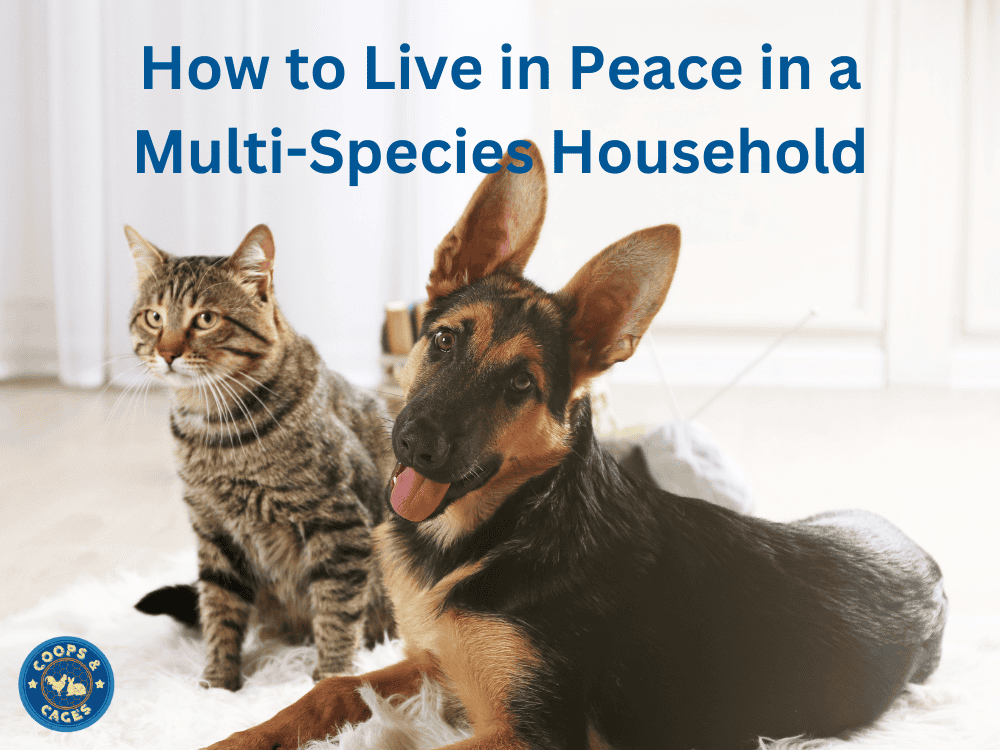Cats, Dogs, Guinea Pigs, Rats
How to Live in Peace in a Multi-Species Household
My zoo-like household has every corner filled with the joyful chaos of furry, feathered, and scaly friends. Living in a multi-species household is an adventure I wouldn’t trade for anything.
From the playful antics of my dogs to the soothing purrs of my cat, and the melodious chirps of my birds, each pet brings its unique charm. But maintaining harmony among different species isn’t always a walk in the park.
In this blog, I’ll share insights and tips gathered from years of experience on how to foster peace and cohesion among the diverse inhabitants of your own multi-species household, focusing on training, communication, and proper pairing of pets.
Knowing What Animals Can Coexist
Understanding which animals can coexist harmoniously in a multi-species household is crucial for maintaining peace and preventing conflicts.
While some combinations, like dogs and cats, can develop strong bonds, others may not be compatible due to their natural instincts.
For instance, a cat might see a bird as prey rather than a companion. Predatory instincts can trigger stress and fear in prey animals, leading to aggression or anxiety-induced behaviours.
Additionally, each species communicates in its unique way, which can lead to misunderstandings and conflicts when they cannot effectively communicate with one another.
Dogs rely heavily on body language, while cats use scent marking and subtle body movements, and birds communicate through vocalisations specific to their species.
Understanding these differences is essential for facilitating peaceful interactions among different species.
By carefully considering the natural behaviours and communication styles of each animal, pet owners can make informed decisions about which species can cohabit harmoniously.
Understanding Your Animals’ Personalities
When pairing different species of pets in a multi-species household, it’s imperative to consider the individual personality and past experiences of each animal.
Just like humans, animals have unique temperaments and preferences that can influence their interactions with other species.
For example, while some dogs may be naturally friendly and gentle, making them suitable companions for rabbits or other small animals, others may have a more dominant or prey-driven nature that could pose a risk to smaller pets.
These personality traits may be because of their breed or it may be because of past experiences.
For example, rescue dogs may carry emotional baggage from past traumas, which could manifest as aggression or reactive behaviours towards certain animals.
It’s crucial to observe and assess how your pet has reacted around other animals in the past to gauge their compatibility with potential housemates. Additionally, gradual introductions and supervised interactions can help prevent conflicts.
By taking the time to understand each pet’s personality and history, pet owners can make informed decisions and create a harmonious living environment where all members of the multi-species family can thrive.

Training
Integrating different species under one roof requires patience and persistence.
When I introduced my new dog to our resident cat, I knew it would take time and dedication to ensure they coexisted peacefully. At first, all interactions were supervised so no one was at risk.
Positive reinforcement (such as praise, pats or treats) proved to be the most effective method in encouraging my dog to exhibit calm and respectful behaviour around the cat.
Whenever he displayed friendly interactions or ignored the cat’s presence, I promptly rewarded him to reinforce the desired behaviour. Training sessions were conducted in short, manageable intervals, allowing for gradual progress and preventing overwhelm.
It’s important to understand that punishment can lead to fear or aggression, undermining the goal of harmonious cohabitation. Instead, I focused on building positive associations between my pets through structured training sessions. And now they’re the best of friends!
Keeping Them Apart
In a multi-species household, it’s essential to recognise when certain species need to be separated for their safety and well-being.
For instance, while my dog roams indoors, I ensure my birds are safely contained within their cage to prevent any potential accidents or confrontations.
However, when the dog is outside playing or occupied elsewhere, I seize the opportunity to let the birds stretch their wings and explore the house freely.
This strategic scheduling allows each pet to enjoy their respective environments without the risk of unwanted interactions or conflicts.
By implementing these simple yet effective measures, I can provide a safe and enriching environment for all my pets, promoting harmony and balance within our multi-species household.

Jordan’s Wrap
Living in a multi-species household is a rewarding journey filled with joy, challenges, and endless learning opportunities.
By understanding the unique behaviours and personalities of each pet, you can foster a harmonious environment where different species coexist peacefully.
Through persistence and positive reinforcement training, I’ve successfully navigated the complexities of multi-species interactions, ensuring the well-being and happiness of all my companions.
While some species may require separate spaces at times, strategic management and thoughtful scheduling allow for safe and enjoyable cohabitation.
With dedication and love, creating a peaceful multi-species household is not just a possibility, but a fulfilling reality.



